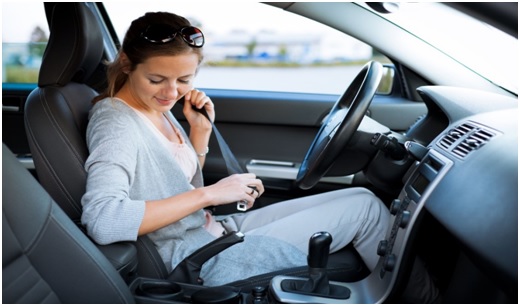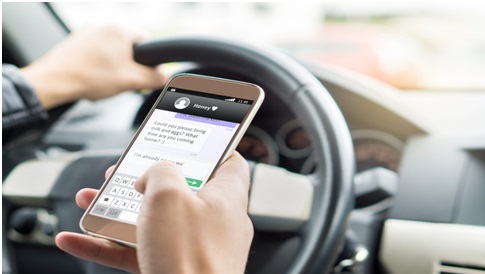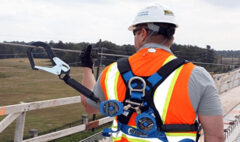Defensive Driving: A Guide to Safe and Responsible Driving
Defensive Driving: A Guide to Safe and Responsible Driving
In the hustle and bustle of our daily lives, driving often becomes second nature. We jump into our cars, rush to our destinations, and sometimes forget the immense responsibility that comes with being behind the wheel. The alarming statistics from the Centers for Disease Control and Prevention (CDC) remind us of the grave consequences of neglecting safe driving practices. In 2020 alone, 11,654 individuals lost their lives in motor vehicle crashes involving alcohol-impaired drivers in the United States, constituting a staggering 30% of all traffic-related deaths. This marked a 14.3% increase compared to the preceding year, highlighting the urgent need for heightened awareness and proactive measures to combat this issue.

Moreover, the sobering fact that 32 people perish daily due to crashes involving alcohol-impaired drivers, translating to one death every 45 minutes, underscores the relentless toll of irresponsible driving behavior. The financial burden is equally significant, with the annual estimated cost of crash deaths involving alcohol-impaired drivers reaching approximately $123.3 billion in 2020. These costs encompass medical expenses and the immeasurable value of lives lost, painting a grim picture of the repercussions of impaired driving.While alcohol-impaired driving garners substantial attention, the menace of drug-impaired driving looms large as well. However, due to data limitations, its harmful effects are less understood compared to alcohol-impaired driving. Nevertheless, it remains a pressing public health concern that demands collective action and awareness.
Centers for Disease Control and Prevention: Impaired Driving: Get the Facts
https://www.cdc.gov/transportationsafety/impaired_driving/impaired-drv_factsheet.html
What is Defensive Driving ?
Defensive driving is a proactive approach to operating a vehicle that prioritizes safety by anticipating and effectively responding to potential hazards on the road. It encompasses a set of driving techniques and strategies aimed at minimizing risks, avoiding collisions, and protecting oneself and others from harm. Defensive drivers maintain a heightened level of awareness, constantly scanning their surroundings, and maintaining a safe following distance. They anticipate the actions of other road users, remain prepared to react swiftly to unexpected situations, and exercise patience and courtesy to navigate through traffic safely. By embracing defensive driving principles, motorists not only safeguard themselves and their passengers but also contribute to creating a culture of responsible and respectful driving behavior on our roadways.

Speeding
According to the National Highway Traffic Safety Administration, speeding resulted in the deaths of 12,330 people on the road in 2021, endangering everyone’s safety. Speeding is a perilous behavior that significantly increases the risk of accidents and exacerbates their severity. When drivers exceed the posted speed limits, they compromise their ability to react promptly to unexpected obstacles or hazards on the road. The faster a vehicle travels, the longer its stopping distance becomes, amplifying the likelihood of collisions. Moreover, high speeds diminish the effectiveness of safety features such as airbags and seatbelts, leaving occupants more vulnerable to injury or fatality in the event of a crash. Beyond the immediate dangers, speeding also undermines the stability and control of vehicles, making them more susceptible to loss of traction and rollovers, especially in adverse weather conditions. Ultimately, the allure of arriving at a destination more quickly pales in comparison to the devastating consequences that speeding can inflict on drivers, passengers, and bystanders alike.
National Highway Traffic Safety Administration: Speeding
https://www.nhtsa.gov/risky-driving/speeding
Different Types of Driving Distractions
The three types of distractions are cognitive, manual and visual. Cognitive distractions involve the mental engagement of drivers in activities unrelated to driving, such as daydreaming, talking on the phone, or engaging in deep conversations with passengers. These distractions can impair reaction times and decision-making abilities, leading to an increased risk of accidents. Manual distractions occur when drivers take their hands off the steering wheel to perform tasks like adjusting the radio, eating, or reaching for objects. Such actions compromise control over the vehicle, making it difficult to respond quickly to potential hazards. Visual distractions, on the other hand, occur when drivers divert their eyes from the road to look at something else, whether it’s reading a billboard, checking a map, or glancing at a text message. This can lead to a loss of situational awareness and significantly increase the likelihood of collisions. Collectively, cognitive, manual, and visual distractions underscore the importance of maintaining focus and minimizing non-driving activities while operating a vehicle to ensure the safety of all road users.
Cellphones and Driving
Using cellphones while driving poses a grave danger to road safety, as it diverts the driver’s attention away from the task at hand. Whether it’s making calls, texting, or checking notifications, these activities create cognitive, manual, and visual distractions, impairing the driver’s ability to react promptly to changes in traffic conditions. Research has shown that the risk of accidents increases substantially when drivers engage in cellphone use behind the wheel, akin to driving under the influence of alcohol. Despite advancements in hands-free technology, the fundamental issue lies in the cognitive distraction caused by engaging in conversations or interacting with the device. Even a momentary lapse in attention can have catastrophic consequences, underscoring the imperative of refraining from cellphone use while driving to ensure the safety of oneself and others on the road.

Following Distance
Maintaining a three-second following distance is paramount for safe driving as it provides crucial reaction time and space to respond to sudden changes in traffic conditions. This buffer allows drivers to react promptly to unexpected events, such as sudden stops or lane changes by the vehicle ahead, reducing the risk of rear-end collisions. Moreover, it provides a margin of safety in adverse weather conditions or low visibility scenarios, allowing drivers to adjust their speed accordingly and avoid potential accidents. By adhering to the three-second rule, drivers not only mitigate the risk of accidents but also contribute to smoother traffic flow, fostering a safer and more efficient driving environment for everyone on the road.
Why Defensive Driving is Important ?
Why is defensive driving so crucial? Put simply, it saves lives. By adopting defensive driving techniques, motorists can anticipate and respond to potential hazards effectively, reducing the likelihood of accidents and mitigating their severity. It empowers drivers to take control of their safety and that of others on the road, fostering a culture of responsibility and vigilance.
Online safety and health training in defensive driving is important for ensuring the well-being of both drivers and pedestrians. By educating individuals on safe driving practices, such as maintaining a safe following distance and avoiding distractions, the risk of accidents and injuries on the road can be significantly reduced. Additionally, such training emphasizes the importance of recognizing and responding to hazardous road conditions, thus promoting proactive driving behaviors. It is important to mention that investing in online safety and health training in defensive driving not only enhances road safety but also fosters a culture of responsibility and accountability among drivers.
Safety Result Professionals Online Defensive Driving (DDC-2.5) Course
As advocates for safe driving practices, Safety Result Professionals offers accessible, high-quality online safety and health training courses tailored to reduce accidents, injuries, fatalities, and insurance costs. Their defensive driving course titled Defensive Driving (DDC-2.5) is a great choice for organizations and individuals to gain the knowledge, skills and awareness to navigate the roadways safely. Safety Result Professionals is committed to making our communities safer and more resilient. To learn more about their courses and initiatives, visit their website at www.safetyresultpros.com.
In conclusion, defensive driving isn’t just a skill; it’s a mindset—a commitment to prioritizing safety above all else. By embracing this ethos and adhering to responsible driving practices, we can create safer roads for everyone, one journey at a time. Let’s pledge to drive with caution, consideration, and respect for the well-being of ourselves and others.
Author: Dr. O’Neil G. Blake, Chief Executive Officer (CEO) of Safety Result Professionals
MS., MBA., MSc., CSP., ASP., CSHM., CSMP., MRSA.
Date: 03-12-2024













Comments (2)
gratis binance-konto
Your point of view caught my eye and was very interesting. Thanks. I have a question for you.
admin
Thanks for your feedback. Please go ahead and ask the question.
Dr. O’Neil G. Blake
ASP, CSP